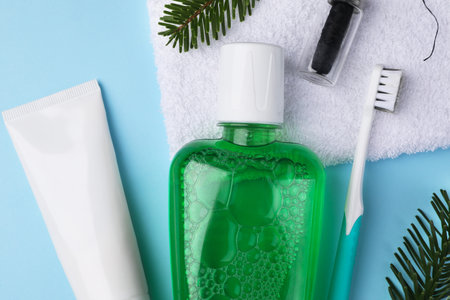Introduction to Plastic-Free Packaging in the UK Aesthetics Sector
The aesthetic products sector in Britain has witnessed significant evolution over the past decade, particularly in its approach to packaging. Traditionally, plastic has been the material of choice due to its versatility, cost-effectiveness, and durability. However, mounting concerns about environmental sustainability and single-use plastics have sparked a decisive shift within the industry. Consumers are increasingly aware of the ecological impact of their purchases, driving brands to reconsider their packaging strategies and explore alternatives that align with both regulatory pressures and public sentiment.
Across the UK, demand for plastic-free packaging solutions is no longer niche; it is rapidly becoming an expectation. Influenced by media coverage, government initiatives such as the UK Plastics Pact, and local council recycling targets, British consumers are seeking out brands that demonstrate genuine commitment to reducing plastic waste. This trend is especially pronounced within the aesthetics market, where product appearance and ethical considerations strongly influence purchasing decisions. As a result, businesses operating in this space face both challenges and opportunities as they navigate the transition towards more sustainable packaging solutions while maintaining product integrity and brand appeal.
2. Consumer Attitudes and Regulatory Pressures
The British market has witnessed a marked shift in consumer perspectives towards sustainability, particularly in the realm of aesthetic products. Increasingly, UK consumers are seeking brands that demonstrate genuine commitment to environmental responsibility. Recent surveys indicate that over 70% of British shoppers consider sustainable packaging an important factor when purchasing cosmetics and personal care items. This heightened awareness is fuelled not only by environmental concerns but also by widespread media coverage and grassroots campaigns highlighting the detrimental impact of plastic waste.
British Consumer Preferences
| Consumer Preference | Percentage (%) |
|---|---|
| Favour brands with plastic-free packaging | 68 |
| Willing to pay more for sustainable packaging | 53 |
| Actively avoid single-use plastics | 61 |
This data illustrates a clear trend: there is a growing expectation for brands to lead on sustainability and transparency regarding their packaging choices. Brands operating in the UK are thus under increasing pressure to adapt or risk losing market share.
The Role of UK Regulations
Regulatory frameworks play a pivotal role in shaping industry behaviour. The UK government has implemented several measures to reduce plastic waste, such as the Plastic Packaging Tax (introduced in April 2022), which levies charges on manufacturers using less than 30% recycled plastic in packaging. Additionally, extended producer responsibility schemes are set to increase accountability for the entire lifecycle of packaging materials. These regulations serve as both a stick and a carrot: they penalise unsustainable practices while providing incentives for innovation in alternative materials.
Main Regulatory Drivers in the UK
| Policy/Regulation | Description |
|---|---|
| Plastic Packaging Tax | Tax on plastic packaging containing less than 30% recycled content |
| Single-Use Plastics Ban | Bans on items such as straws, cotton buds, and stirrers |
| Extended Producer Responsibility (EPR) | Makes producers responsible for costs of collecting and recycling packaging waste |
Together, evolving consumer attitudes and robust regulatory pressures are compelling the aesthetics sector to innovate rapidly. Brands must now balance the expectations of increasingly eco-conscious British consumers with compliance requirements, all while maintaining product quality and aesthetic appeal.
![]()
3. Key Challenges Facing Aesthetic Brands
Transitioning to plastic-free packaging presents a set of tangible hurdles for aesthetic brands operating in the UK. While consumer demand for sustainable solutions is on the rise, several practical barriers can complicate the shift away from conventional plastics.
Cost Implications
One of the foremost challenges is the increased cost associated with sourcing and producing alternative materials. Plastic has long been favoured for its affordability, versatility, and scalability. In comparison, sustainable materials such as glass, aluminium, or biodegradable options often come at a premium, both in terms of material costs and manufacturing processes. For smaller British brands or indie labels, these added expenses can be particularly prohibitive and may limit their ability to compete with larger players or maintain attractive price points for consumers.
Functional Requirements
Aesthetic products—such as skincare serums, creams, or perfumes—often require packaging that provides airtight seals, UV protection, and durability to ensure product efficacy and shelf life. Many plastic alternatives struggle to meet all these criteria simultaneously. For example, paper-based or compostable packaging may lack sufficient barrier properties, while glass containers are heavier and more fragile, complicating logistics and increasing carbon footprints during distribution within the UK’s diverse geography.
Maintaining Product Integrity
Ensuring that products remain uncontaminated and stable throughout their lifecycle is paramount in the aesthetics sector. Packaging must protect sensitive formulations from external factors like moisture and light while avoiding any chemical interactions between the container and its contents. Plastics have historically provided a reliable solution here; moving away from them demands rigorous testing of new materials to guarantee they uphold British regulatory standards for cosmetic safety and quality.
Supply Chain Adjustments
The transition also necessitates significant changes across supply chains. Sourcing sustainable materials locally within Britain can be challenging due to limited infrastructure or inconsistent supply. Imported alternatives may lead to increased lead times or higher emissions, inadvertently offsetting environmental gains.
Cultural Perceptions and Consumer Expectations
Finally, British consumers are discerning when it comes to both aesthetics and sustainability. Packaging must not only align with eco-conscious values but also deliver a premium unboxing experience synonymous with high-end beauty brands in the UK market. Striking this balance requires thoughtful design choices that respect both function and form, further raising the bar for innovation in this space.
4. Innovative Materials and Technologies
The shift towards plastic-free packaging in the British aesthetic products sector has spurred a wave of innovation, both domestically and internationally. Brands and material scientists are collaborating to develop packaging solutions that are not only functional and attractive but also align with the growing demand for sustainability. This section explores the forefront of these advancements, focusing on biodegradable, compostable, and recyclable alternatives to traditional plastics.
Biodegradable Alternatives
British companies are increasingly adopting biodegradable materials derived from sources such as cornstarch, seaweed, and cellulose. These materials naturally break down under specific conditions, reducing long-term environmental impact. For example, packaging made from polylactic acid (PLA), which is plant-based, has gained traction for items like sachets and film wraps commonly used in skincare and cosmetic products.
Compostable Solutions
Compostable packaging goes a step further by ensuring that materials decompose into non-toxic components within industrial or even home composting environments. Recent innovations include mycelium-based trays and containers, which are grown from mushroom roots and provide a sturdy yet fully compostable alternative for luxury product presentation. Notably, several UK start-ups have pioneered paper-pulp moulded inserts that replace plastic holders in gift sets and palettes.
Recyclable Packaging Innovations
Recyclability remains a key focus for British brands aiming to close the loop on material use. Advances in mono-material designs (using a single type of recyclable material) have simplified sorting processes at recycling facilities. Glass, aluminium, and specially treated cardboard are increasingly favoured over composite plastics. Some companies have invested in refill systems using durable containers made from recycled glass or stainless steel to further minimise waste.
Comparison Table: Plastic-Free Packaging Materials
| Material Type | Main Source | End-of-Life Option | Common Use Cases |
|---|---|---|---|
| Biodegradable PLA | Corn starch | Industrial composting | Sachets, films |
| Mycelium Trays | Mushroom roots | Home/industrial composting | Product trays, boxes |
| Pulp Moulded Inserts | Recycled paper | Curbside recycling/composting | Gift set holders |
| Glass & Aluminium | Mineral extraction/recycling | Widely recycled | Bottles, jars, palettes |
British Case Studies
A number of British beauty brands have garnered recognition for their commitment to innovative packaging. For instance, some have introduced return-and-refill schemes in partnership with high street retailers, leveraging robust glass packaging. Others collaborate with local manufacturers to source biodegradable films or explore emerging technologies such as water-soluble inks for labelling. These efforts not only reduce plastic dependency but also enhance brand reputation among eco-conscious UK consumers.
5. Creative Case Studies from UK Brands
When it comes to plastic-free packaging in the British aesthetic sector, several homegrown brands have emerged as pioneers, each developing innovative approaches to tackle environmental concerns while maintaining product appeal. Here we examine a few notable examples and explore their strategies and outcomes.
Lush: The Naked Packaging Trailblazer
Lush is arguably the most high-profile British brand championing plastic-free initiatives. Their “naked” products—solid shampoos, conditioners, and bath bombs—require no packaging at all. Where some containment is necessary, Lush opts for recycled paper or reusable tins. This bold move aligns with their ethos of minimal waste and sustainability, leading to both strong customer loyalty and a distinctive shelf presence.
REN Clean Skincare: Committed to Zero Waste
REN Clean Skincare has made public commitments to become zero waste by 2021, with packaging innovations such as bottles made from 100% recycled materials (including ocean plastics) and fully recyclable caps. Their approach involves collaborating with recycling specialists and transparency in their supply chain. Customer feedback has been largely positive, enhancing the brands reputation among environmentally conscious consumers.
Bulldog Skincare: Bioplastic Innovation
Bulldog Skincare for Men has replaced traditional plastic tubes with sugarcane-based bioplastics for many of its products. This renewable material significantly reduces fossil fuel use and carbon emissions. Bulldog’s transparent communication about this shift has helped educate their market about the benefits of plant-based plastics, positioning themselves as a responsible choice within male grooming.
Lessons Learned from Pioneers
What these case studies reveal is that success in plastic-free packaging often hinges on a blend of technical innovation, transparent communication, and alignment with brand values. While challenges such as cost, scalability, and consumer education persist, UK brands are demonstrating that determined action can yield significant commercial and environmental rewards.
6. What’s Next? Future Trends and Opportunities
As the British market continues to evolve, so too do expectations for plastic-free packaging within the aesthetic products sector. Looking ahead, brands must anticipate not only stricter regulations but also a more discerning consumer base that expects genuine sustainability rather than greenwashing. The next wave of development is likely to be shaped by several key trends.
Rising Demand for Transparency and Traceability
UK consumers are increasingly interested in the origins and lifecycle of packaging materials. Brands will need to provide clear, verifiable information about their sourcing and disposal practices. Digital solutions such as QR codes linking to material provenance or recycling instructions could become standard practice, helping brands build trust while empowering customers to make informed choices.
Innovative Material Adoption
The quest for effective plastic-free alternatives will drive innovation in materials science. We can expect greater adoption of biodegradable composites, mycelium-based packaging, seaweed-derived films, and other novel solutions tailored for both product protection and visual appeal. UK brands may also look towards locally sourced materials that reduce carbon footprints and support regional industries.
Circular Economy Initiatives
There is growing recognition that true sustainability lies in circularity rather than simple substitution. Refillable systems, deposit-return schemes, and take-back initiatives will likely see wider uptake in the British aesthetic sector. Early adopters who successfully implement these models will set benchmarks for others, shaping industry-wide best practices.
Collaborative Efforts Across the Supply Chain
The shift away from plastic cannot be achieved in isolation. Forward-thinking UK businesses are expected to collaborate closely with suppliers, logistics providers, and even competitors to establish shared standards and infrastructure for sustainable packaging. Industry consortia or public-private partnerships may emerge as powerful drivers of systemic change.
Opportunities for Brand Differentiation
Ultimately, embracing plastic-free packaging presents significant opportunities for differentiation in a crowded marketplace. Brands able to communicate authentic environmental commitment—supported by rigorous evidence—will resonate most strongly with British consumers who value both ethics and aesthetics. The journey toward a plastic-free future is complex, but those willing to experiment, learn, and adapt will lead the next chapter in sustainable beauty packaging.


